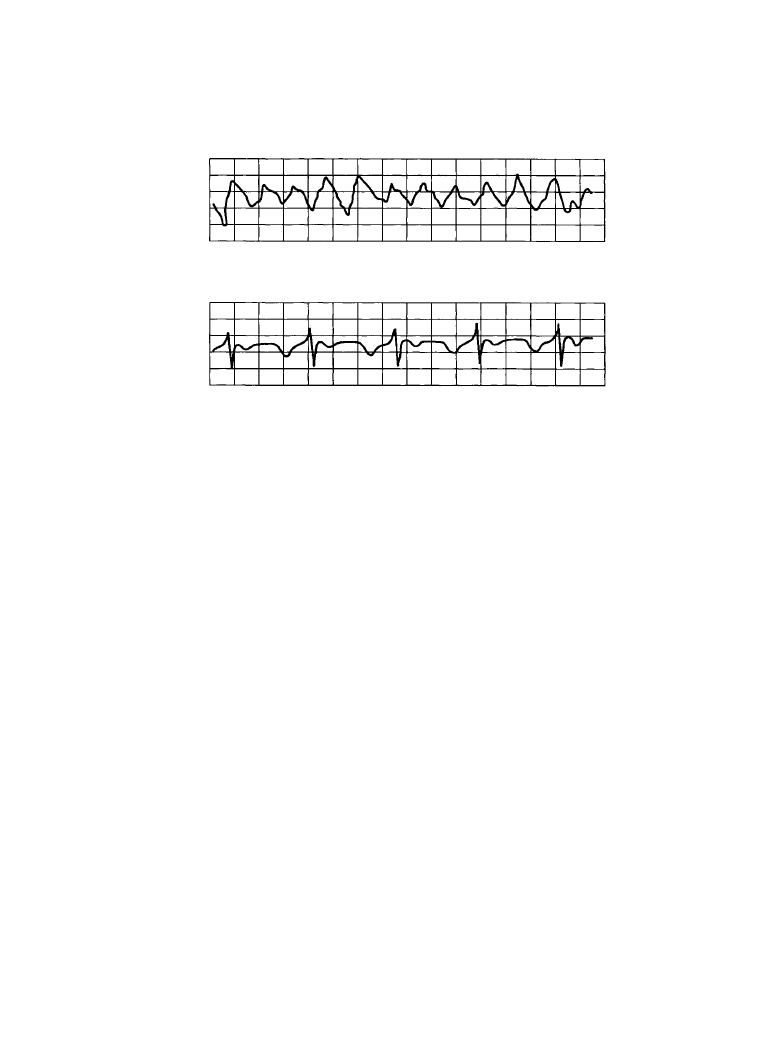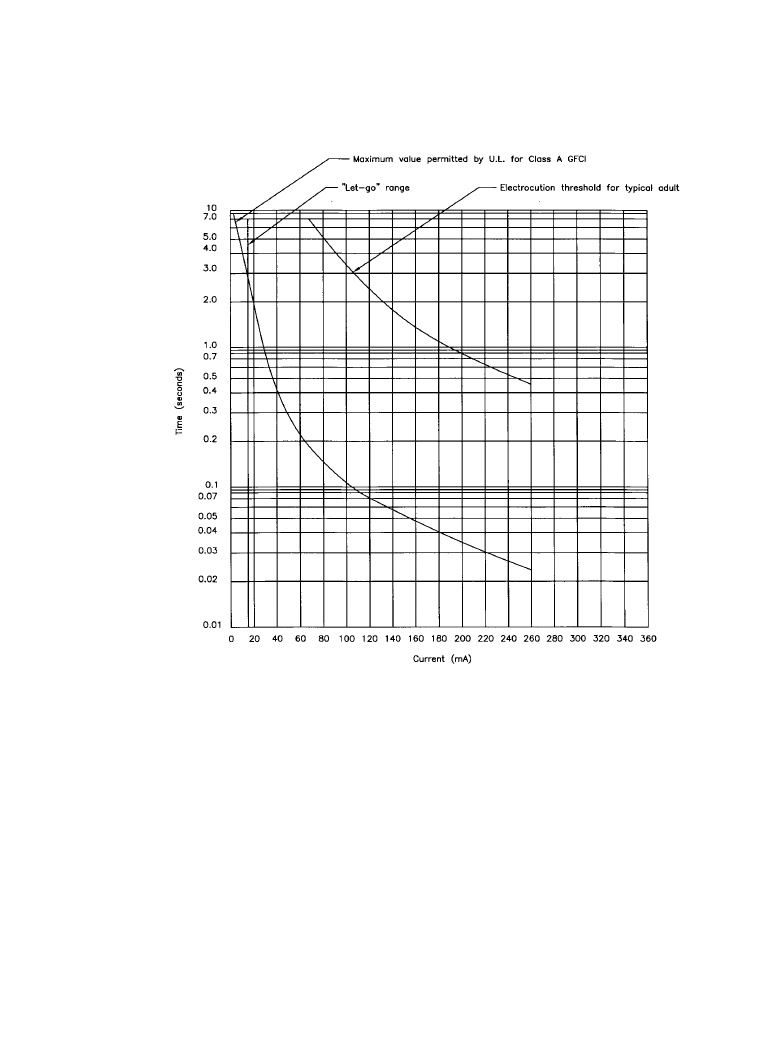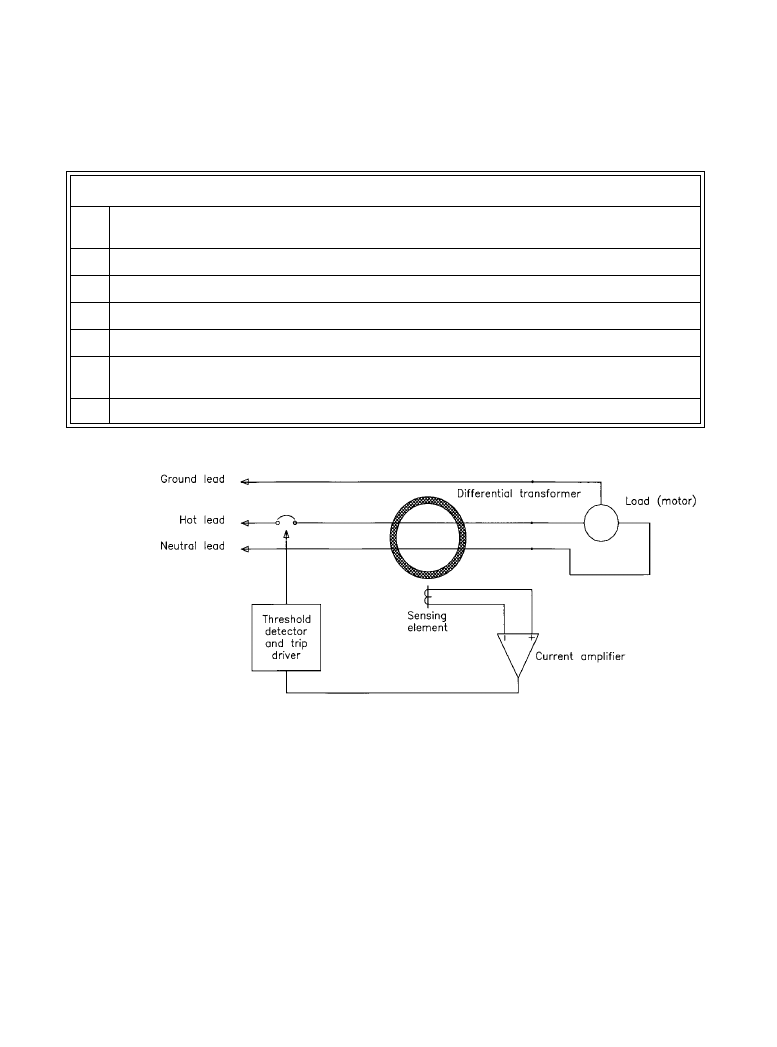ВУЗ: Казахская Национальная Академия Искусств им. Т. Жургенова
Категория: Книга
Дисциплина: Не указана
Добавлен: 03.02.2019
Просмотров: 21580
Скачиваний: 19

13-37
Chapter
13.3
Safety Issues
Jerry C. Whitaker, Editor-in-Chief
13.3.1 Introduction
Electrical safety is important when working with any type of electronic hardware. Because trans-
mitters and many other systems operate at high voltages and currents, safety is doubly important.
The primary areas of concern, from a safety standpoint, include:
•
Electric shock
•
Nonionizing radiation
•
Beryllium oxide (BeO) ceramic dust
•
Hot surfaces of vacuum tube devices
•
Polychlorinated biphenyls (PCBs)
13.3.2 Electric Shock
Surprisingly little current is required to injure a person. Studies at Underwriters Laboratories
(UL) show that the electrical resistance of the human body varies with the amount of moisture on
the skin, the muscular structure of the body, and the applied voltage. The typical hand-to-hand
resistance ranges between 500
Ω and 600 kΩ, depending on the conditions. Higher voltages have
the capability to break down the outer layers of the skin, which can reduce the overall resistance
value. UL uses the lower value, 500
Ω, as the standard resistance between major extremities, such
as from the hand to the foot. This value is generally considered the minimum that would be
encountered and, in fact, may not be unusual because wet conditions or a cut or other break in the
skin significantly reduces human body resistance.
13.3.2a
Effects on the Human Body
Table 13.3.1 lists some effects that typically result when a person is connected across a current
source with a hand-to-hand resistance of 2.4 k
Ω. The table shows that a current of approximately
50 mA will flow between the hands, if one hand is in contact with a 120 V ac source and the
Downloaded from Digital Engineering Library @ McGraw-Hill (www.digitalengineeringlibrary.com)
Copyright © 2004 The McGraw-Hill Companies. All rights reserved.
Any use is subject to the Terms of Use as given at the website.
Source: Standard Handbook of Audio and Radio Engineering

13-38 Standards and Practices
other hand is grounded. The table indicates that even the relatively small current of 50 mA can
produce ventricular fibrillation of the heart, and perhaps death. Medical literature describes ven-
tricular fibrillation as rapid, uncoordinated contractions of the ventricles of the heart, resulting in
loss of synchronization between heartbeat and pulse beat. The electrocardiograms shown in Fig-
ure 13.3.1 compare a healthy heart rhythm with one in ventricular fibrillation. Unfortunately,
once ventricular fibrillation occurs, it will continue. Barring resuscitation techniques, death will
ensue within a few minutes.
The route taken by the current through the body has a significant effect on the degree of
injury. Even a small current, passing from one extremity through the heart to another extremity,
is dangerous and capable of causing severe injury or electrocution. There are cases where a per-
son has contacted extremely high current levels and lived to tell about it. However, usually when
this happens, the current passes only through a single limb and not through the body. In these
instances, the limb is often lost, but the person survives.
Current is not the only factor in electrocution. Figure 13.3.2 summarizes the relationship
between current and time on the human body. The graph shows that 100 mA flowing through a
human adult body for 2 s will cause death by electrocution. An important factor in electrocution,
the let-go range, also is shown on the graph. This range is described as the amount of current that
causes “freezing”, or the inability to let go of the conductor. At 10 mA, 2.5 percent of the popu-
lation will be unable to let go of a “live” conductor. At 15 mA, 50 percent of the population will
be unable to let go of an energized conductor. It is apparent from the graph that even a small
amount of current can “freeze” someone to a conductor. The objective for those who must work
around electric equipment is how to protect themselves from electric shock. Table 13.3.2 lists
required precautions for personnel working around high voltages.
Table 13.3.1 The Effects of Current on the Human Body
Current
Effect
1 mA or less
No sensation, not felt
More than 3 mA
Painful shock
More than 10 mA
Local muscle contractions, sufficient to cause “freezing” to the circuit for 2.5 per-
cent of the population
More than 15 mA
Local muscle contractions, sufficient to cause “freezing” to the circuit for 50 percent
of the population
More than 30 mA
Breathing is difficult, can cause unconsciousness
50 mA to 100 mA
Possible ventricular fibrillation
100 mA to 200 mA
Certain ventricular fibrillation
More than 200 mA
Severe burns and muscular contractions; heart more apt to stop than to go into
fibrillation
More than a few amperes
Irreparable damage to body tissue
Downloaded from Digital Engineering Library @ McGraw-Hill (www.digitalengineeringlibrary.com)
Copyright © 2004 The McGraw-Hill Companies. All rights reserved.
Any use is subject to the Terms of Use as given at the website.
Safety Issues

Safety Issues 13-39
13.3.2b
Circuit Protection Hardware
The typical primary panel or equipment circuit breaker or fuse will not protect a person from
electrocution. In the time it takes a fuse or circuit breaker to blow, someone could die. However,
there are protection devices that, properly used, may help prevent electrocution. The ground-fault
current interrupter (GFCI), shown in Figure 13.3.3, works by monitoring the current being
applied to the load. The GFI uses a differential transformer and looks for an imbalance in load
current. If a current (5 mA, ±1 mA) begins to flow between the neutral and ground or between
the hot and ground leads, the differential transformer detects the leakage and opens up the pri-
mary circuit within 2.5 ms.
GFIs will not protect a person from every type of electrocution. If the victim becomes con-
nected to both the neutral and the hot wire, the GFI will not detect an imbalance.
13.3.2c
Working with High Voltage
Rubber gloves are commonly used by engineers working on high-voltage equipment. These
gloves are designed to provide protection from hazardous voltages or RF when the wearer is
working on “hot” ac or RF circuits. Although the gloves may provide some protection from these
hazards, placing too much reliance on them can have disastrous consequences. There are several
reasons why gloves should be used with a great deal of caution and respect. A common mistake
made by engineers is to assume that the gloves always provide complete protection. The gloves
found in many facilities may be old or untested. Some may show signs of user repair, perhaps
with electrical tape. Few tools could be more hazardous than such a pair of gloves.
Another mistake is not knowing the voltage rating of the gloves. Gloves are rated differently
for both ac and dc voltages. For example, a class 0 glove has a minimum dc breakdown voltage
of 35 kV; the minimum ac breakdown voltage, however, is only 6 kV. Furthermore, high-voltage
(
a)
(
b)
Figure 13.3.1
Electrocardiogram of a human heartbeat: (
a) healthy rhythm, (b) ventricular fibrilla-
tion.
Downloaded from Digital Engineering Library @ McGraw-Hill (www.digitalengineeringlibrary.com)
Copyright © 2004 The McGraw-Hill Companies. All rights reserved.
Any use is subject to the Terms of Use as given at the website.
Safety Issues

13-40 Standards and Practices
rubber gloves are not usually tested at RF frequencies, and RF can burn a hole in the best of
them. It is possible to develop dangerous working habits by assuming that gloves will offer the
required protection.
Gloves alone may not be enough to protect an individual in certain situations. Recall the
axiom of keeping one hand in a pocket while working around a device with current flowing?
That advice is actually based on simple electricity. It is not the “hot” connection that causes the
problem, but the ground connection that lets the current begin to flow. Studies have shown that
more than 90 percent of electric equipment fatalities occurred when the grounded person con-
tacted a live conductor. Line-to-line electrocution accounted for less than 10 percent of the
deaths.
Figure 13.3.2
Effects of electric current and time on the human body. Note the “let-go” range.
Downloaded from Digital Engineering Library @ McGraw-Hill (www.digitalengineeringlibrary.com)
Copyright © 2004 The McGraw-Hill Companies. All rights reserved.
Any use is subject to the Terms of Use as given at the website.
Safety Issues

Safety Issues 13-41
When working around high voltages, always look for grounded surfaces. Keep hands, feet,
and other parts of the body away from any grounded surface. Even concrete can act as a ground
if the voltage is sufficiently high. If work must be performed in “live” cabinets, then consider
using, in addition to rubber gloves, a rubber floor mat, rubber vest, and rubber sleeves. Although
this may seem to be a lot of trouble, consider the consequences of making a mistake. Of course,
the best troubleshooting methodology is never to work on any circuit without being certain that
no hazardous voltages are present. In addition, any circuits or contactors that normally contain
hazardous voltages should be firmly grounded before work begins.
Table 13.3.2 Required Safety Practices for Engineers Working Around High-Voltage Equip-
ment
High-Voltage Precautions
✓
Remove all ac power from the equipment. Do not rely on internal contactors or SCRs to remove dangerous
ac.
✓
Trip the appropriate power distribution circuit breakers at the main breaker panel.
✓
Place signs as needed to indicate that the circuit is being serviced.
✓
Switch the equipment being serviced to the local control mode as provided.
✓
Discharge all capacitors using the discharge stick provided by the manufacturer.
✓
Do not remove, short circuit, or tamper with interlock switches on access covers, doors, enclosures, gates,
panels, or shields.
✓
Keep away from live circuits.
Figure 13.3.3
Basic design of a ground-fault interrupter (GFI).
Downloaded from Digital Engineering Library @ McGraw-Hill (www.digitalengineeringlibrary.com)
Copyright © 2004 The McGraw-Hill Companies. All rights reserved.
Any use is subject to the Terms of Use as given at the website.
Safety Issues